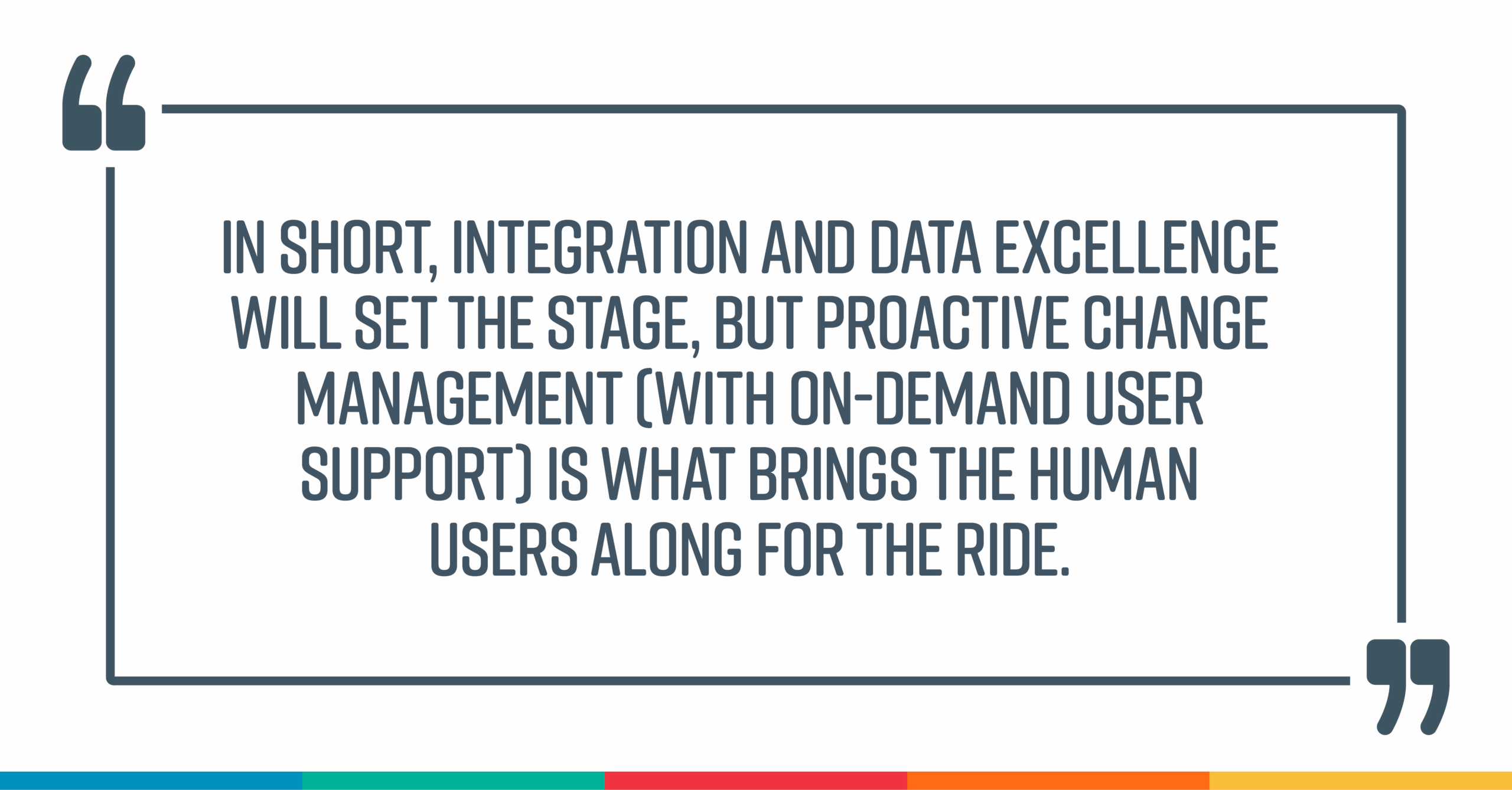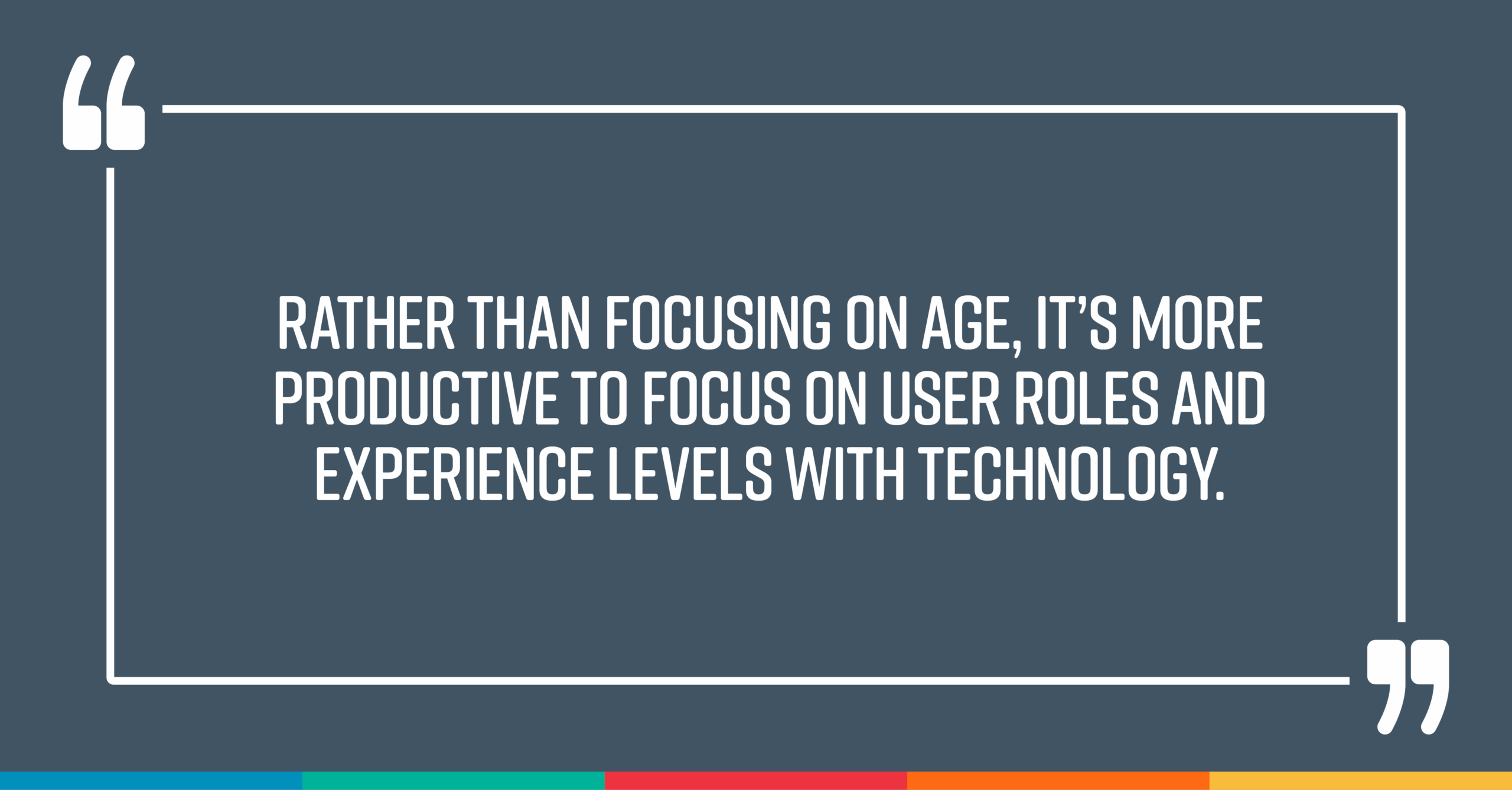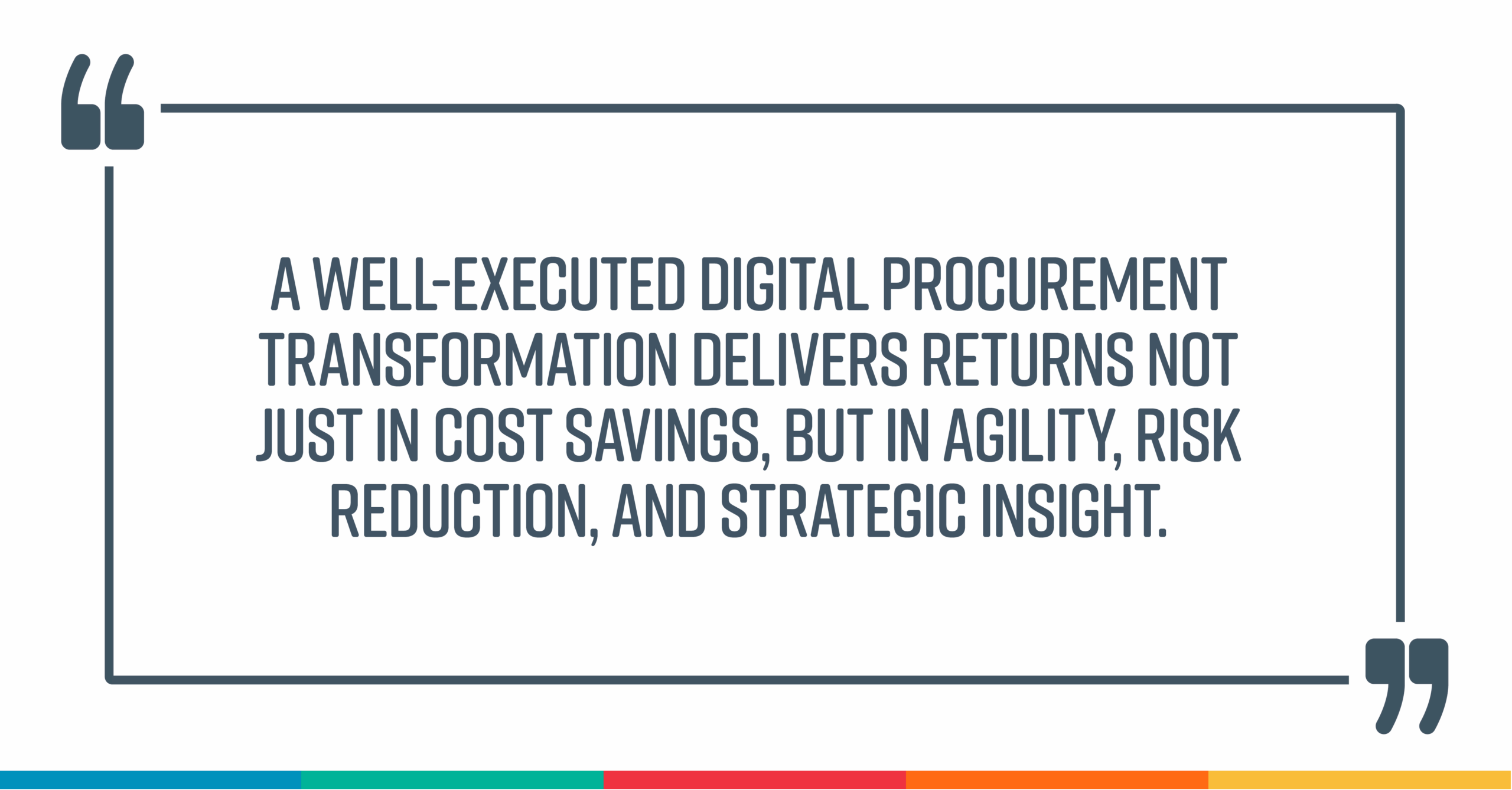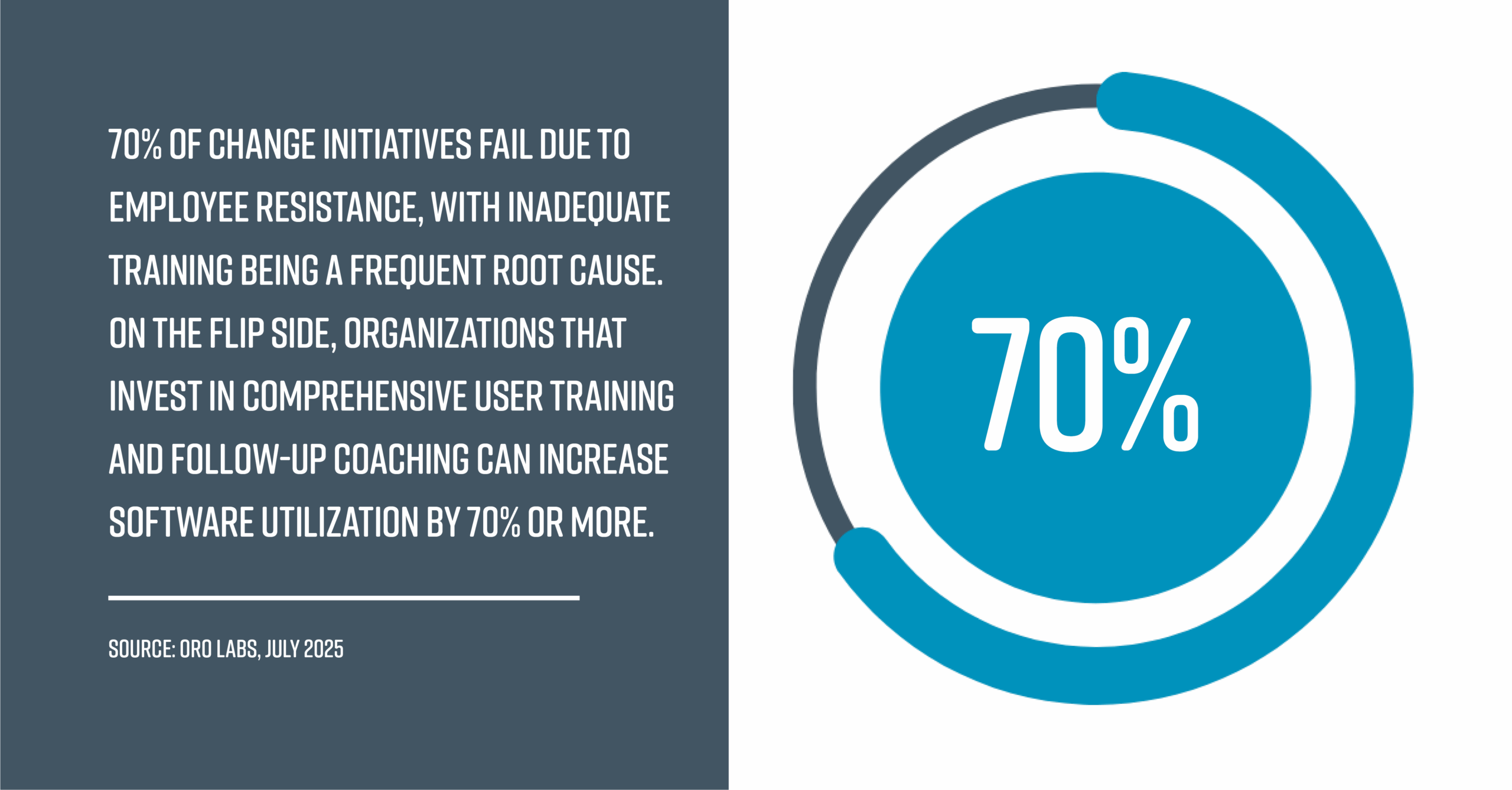Procurement technology is becoming a cornerstone of digital transformation in today’s digital-first business environment. Companies are pursuing tech and procurement transformation initiatives to streamline purchasing, reduce costs, and gain better visibility over their supply chains. However, rolling out new procurement technology is not just an IT project – it’s a people project. Too often, even the most powerful procurement technology solutions fail to deliver their promised value because employees don’t fully adopt them.
In our latest blog, written by our CEO Jonathan O’Brien, we invited three-time tech entrepreneur Matt Palackdharry, whose ventures have reached an astonishing combined valuation of over $400 million so far. Matt shares his perspective on why procurement technology implementations often fail and how we can ensure success going forward. Matt’s insights highlight that achieving digital procurement transformation requires not only great tech, but also careful attention to data, integration, and change management. In this article we explore six key areas from system integration and data quality, to user training, psychology, and the strategic impact, to help your organization realize the full potential of procurement technology.
1. Integration, Data, and Change Management in Procurement Technology
Implementing an integrated procurement tech solution is a complex endeavour that covers both technological and organizational aspects. On the technological side, you must ensure that new procurement platform integrates seamlessly with existing systems and that data migration is handled correctly. Poor integration or bad data can quickly erode user trust. For instance, if pricing data or supplier information is missing or inconsistent, users will lose confidence in the new tech.
On the organizational side, robust change management is needed so that people understand and embrace the new tech. In other words, success in procurement technology implementation rests on three pillars that support each other: integration, data and change management. If any one of these is weak, the whole initiative can stumble.
Getting these fundamentals right requires close alignment between IT and procurement. It’s strategically valuable to have your IT and procurement teams working together from the start. IT experts can ensure data flows and system integrations are solid, while procurement experts configure the platform to fit procurement processes and needs. A key part of change management is surfacing answers for users as their questions arise, in context and in real-time. If an employee encounters a new purchasing screen and can’t figure out what to do next, the system should guide them or provide help instantly. If we make people wait for answers or support, we risk losing their interest and failing to change their behaviour towards embracing technology.
In short, integration and data excellence will set the stage, but proactive change management (with on-demand user support) is what brings the human users along for the ride. Procurement leaders must navigate the procurement technology landscape carefully to implement solutions that tick all these boxes – technological integration, quality data, and user-centric change management, right from day one.

2. Procurement’s Overlooked Importance
Another reason many procurement technology implementations fail has nothing to do with the technology itself, but with perceptions. Procurement is often seen as an administrative hurdle or a box-ticking function; a department that slows things down with compliance checks. This outdated view causes employees (and sometimes leaders) to undervalue procurement’s role, which in turn hinders the adoption of new tech.
In reality, procurement can be a powerful strategic lever for the business, especially when supported by the right tech. Procurement should be central to executing any procurement tech strategy because it directly impacts the bottom line.
A real-world example highlighted by Matt involved a large bank that discovered approximately $1 billion of addressable spend that had been going unnoticed. This finding prompted the firm to appoint its first Chief Procurement Officer and invest in integrated procurement technology solutions to secure negotiated discounts. They performed well and negotiated a 20% discount, which could potentially contribute $200 million to the bottom line if the staff adopted the technology. Fast forward five years, and they were saving $20 million of the $200 million potential. When procurement is equipped with the right tools, the potential benefits are significant.
Organizations must elevate procurement’s role from an afterthought to a core component of strategic planning. This involves securing executive sponsorship for procurement initiatives and communicating to all teams why procurement (and, by extension, procurement tech) is crucial for success.
3. Training and Adoption: Overcoming the Human Barrier
Even the best procurement technology solution won’t deliver value if people don’t use it. Getting employees to actually adopt a new platform is often the hardest part of any tech procurement project. This is the human barrier and often involves resistance to change, fear of the unknown, or simply lack of time and knowledge to incorporate a new tool into a daily routine. Traditional training methods often fall short in overcoming this barrier. A one-off classroom session or a long user manual is usually ineffective in convincing busy professionals to change their established habits.
Training for a procurement platform should be hands-on, contextual, and ongoing. One approach is to use scenario-based learning, where users are given realistic procurement scenarios to complete in the new system, thereby building muscle memory and confidence.
Digital adoption tools (like guided tutorials or in-app walkthroughs) can be extremely helpful here, as they provide live, on-screen guidance while the employee is using the technology. The goal is to make the first few uses of the new tech as smooth as possible and to reinforce new behaviours until they become second nature. Crucially, training shouldn’t be a one-and-done event. Continual support, refresher materials, and advanced tips for users will improve adoption over time.
Neglecting user education is a recipe for low adoption. In fact, studies reveal that 70% of change initiatives fail due to employee resistance, with inadequate training being a frequent root cause. On the flip side, organizations that invest in comprehensive user training and follow-up coaching can increase software utilization by 70% or more. Without sufficient training and support, employees may revert to old, familiar ways of working, bypassing the new system entirely. We’ve all seen cases where, despite having a fancy procurement platform, people still send emails or use spreadsheets for orders because they never became comfortable with the platform.
To overcome this, make training a top priority and tailor it to different user groups. Take the time to understand the needs of your end-users (buyers, approvers, budget owners, etc.) and equip each of them with the knowledge and skills to do their job efficiently using the new system.
4. The Psychology of Change in Procurement Technology Adoption
Beyond formal training, there’s a psychological side to technology adoption that organizations must manage. Change is hard – even positive change can provoke anxiety or resistance. Employees often develop a comfort zone with existing tools and processes and introducing a new procurement technology disrupts that status quo.
One common hurdle is fear of complexity: if the new platform is perceived as complicated or cumbersome, users will naturally push back or avoid it with phrases like “Why do I have to use this new system? The old way was working fine for me.” That sentiment is a natural defence mechanism against change and is something procurement leaders should expect and address.
To mitigate resistance, clear communication and real-time support are your allies. Well before the new procurement technology goes live, communicate the why – why the change is happening and what benefits it will bring. Emphasize how it will make life easier for the users themselves (faster approvals, fewer manual steps, better data for decision-making etc.) and not just benefit the company in abstract terms.
An effective tactic is to roll out changes in manageable increments. An incremental or pilot-based implementation can reduce fear of the unknown. Start with a small group or a single category of spend, learn from that, and gradually expand. This gives people time to adjust and creates internal success stories to showcase.
It’s also worthwhile identifying champions or super-users who embrace the new technology and can influence their peers positively. Peer influence can overcome fears faster than top-down mandates in many cases. The easier and more intuitive you can make the new software, the faster these psychological barriers will come down.
5. Bridging Generational Differences in Technology Adoption
In discussions about new workplace technology, people often bring up generational differences – the idea that younger employees will be naturally technology-savvy while older employees might resist digital change. In practice, when it comes to procurement technology adoption, the differences across generations are usually smaller than stereotypes suggest.
As we explored in our blog on collaborative procurement in the hybrid work era, today’s workforce is a mix of multiple generations all working together in the same digital environment. This means that all user groups have baseline exposure to technology, and all groups can experience frustration or confidence issues with new technology if it’s not introduced well.
Rather than focusing on age, it’s more productive to focus on user roles and experience levels with technology. Effective change management should be inclusive and adaptable to all users. Providing multiple training formats to cater to different learning preferences is the key to overcoming this. Some users (regardless of generation) prefer self-service learning, short video tutorials, or how-to guides where they can teach themselves. Others learn better through live interaction, such as webinars, interactive workshops, or one-on-one coaching. Offering a blend of these options ensures that everyone, whether technology-native or not, can find a comfortable way to learn.

Creating a welcoming environment where no question is seen as “dumb” and early adopters actively support others can make a big difference. Consider organizing training sessions where employees are paired up to learn the new procurement system collaboratively and share useful tips. For instance, a Baby Boomer and a Millennial might approach the technology in different ways, each bringing unique insights. One might contribute deep expertise in procurement processes, while the other might boost confidence with digital interfaces. Such interactions foster collective growth and a positive learning atmosphere.
In summary, procurement technology leaders should avoid making one-size-fits-all assumptions about generations and instead focus on the common goal of ensuring that every user, regardless of age or background, feels equipped and motivated to use the new technology.
6. The Business Impact of Procurement Technology
At the end of the day, why put in all this effort? Because, when procurement technology is implemented and adopted successfully, the business impact can be transformative.
A well-executed digital procurement transformation delivers returns not just in cost savings, but in agility, risk reduction, and strategic insight.

Think of the procurement function as an untapped gold mine – the conversation with Matt reinforced that the business impact of implementing effective procurement technology can be understood in several ways:
- Cost Reductions: Lower purchase prices through consolidated spending and improved negotiations, as well as decreased process costs via automation.
- Revenue Benefits: Enhanced supplier management, leading to better product availability and faster time-to-market.
- Modern Procurement Systems: Richer data, including analytics on spend patterns, supplier performance, and market trends, supporting broader strategic decisions.
- Digitized Procurement Processes: Ensuring consistency and compliance, reducing risks such as maverick spending and contract leakages.
During crises like a pandemic or supply chain disruptions, a technology-enabled procurement function can respond swiftly. Collectively, these benefits increase the business’s strategic agility.
Final Thoughts
Procurement technology implementation is as much about people and change management as it is about technology. By focusing on strong integrations and data, elevating procurement’s role, investing in user training, addressing the psychology of change, and catering to all users across the generational spectrum, organizations can overcome the common pitfalls that cause so many implementations to falter.
The reward for doing so is a high-performing procurement function that delivers not only efficiency and savings, but also strategic value in the form of agility, resilience, and innovation.
You can hear more from Matt Palackdharry by connecting with him on LinkedIn here.
Written by Jonathan O’Brien, leading procurement expert and CEO of Positive Purchasing Ltd. Jonathan and his team work with global blue-chip organizations to help transform their procurement capability.
